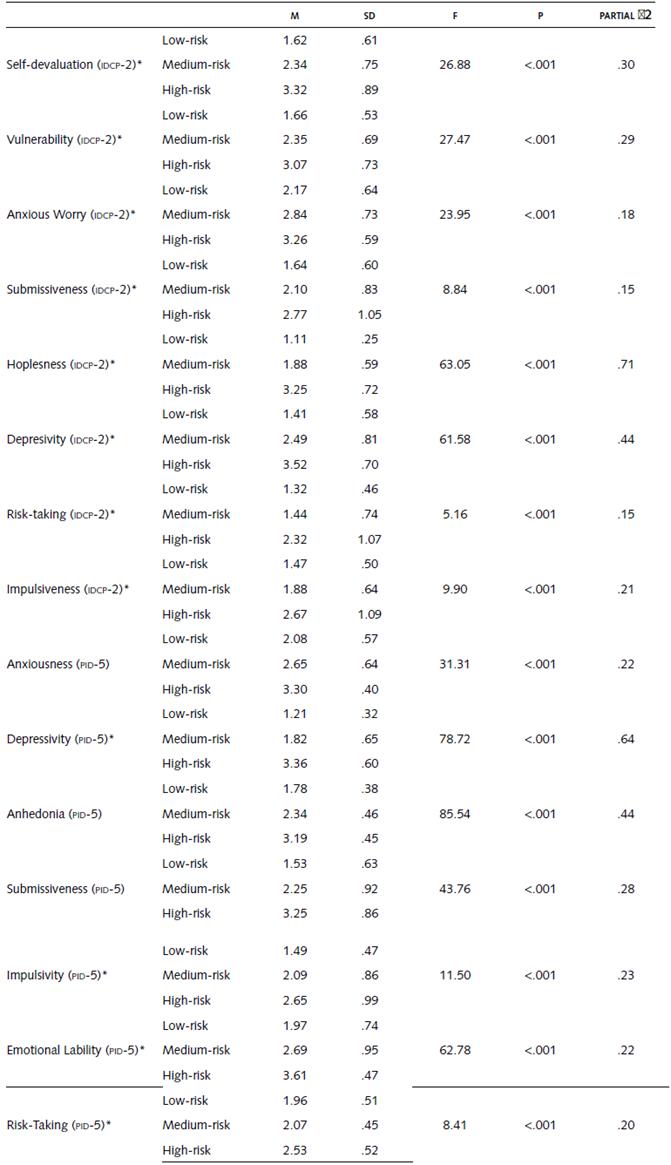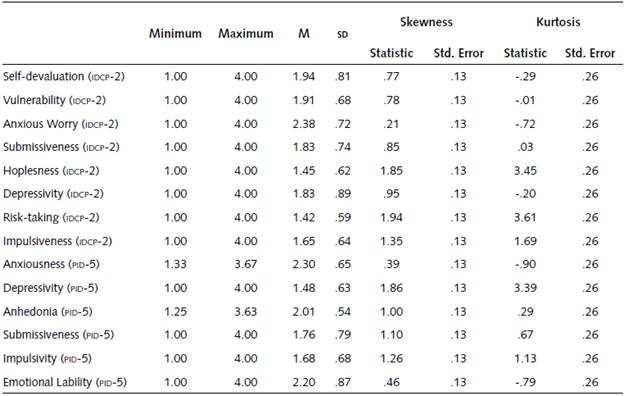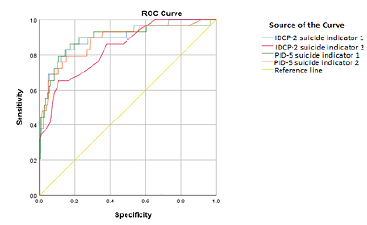Introduction
About 785,000 people commit suicide annually in the world (World Health Organization [WHO], 2018). The frequency of cases is higher in men, reaching 57% higher than in women. It is estimated that for every person who dies by suicide, 20 other people have attempted suicide at least once in their lives (WHO, 2014). These findings indicate suicidal behavior as a public health issue and one of the major challenges for professionals working in the mental health field (Turecki et al., 2019).
Suicide is the focus of public health services when there is an attempt on life itself, but suicidal behavior encompasses more than just the attempt. Suicidal behavior is composed of three factors, suicidal ideation, referring to thoughts and plans to attempt against one's own life; suicide attempt, when the person commits the act but is unsuccessful; and death by suicide (Nock et al., 2008). The main risk factors for suicidal behavior are: having some psychiatric diagnosis, lack of access to resources (e.g., education, employment), traumatic childhood experiences, drug abuse, and having a family history of suicide (Beautrais et al.,1996; Brent et al., 1994; Brown, Beck, et al., 2000; Nock et al., 2008). Besides, having recurrent suicidal ideation and previous attempts to end one's life are the main signs of suicidal potential. That is, they are part of the risk group and need attention (Turecki et al., 2019).
Although the specific mechanisms are not yet known, the origin of suicidal behavior occurs through the interaction of several factors, as biological, psychological, social, and environmental (O'Connor & Kirtley, 2018). Among the psychological factors related to suicidal behavior, studies have highlighted the pathological personality traits (Brezo et al., 2008; Jaksic et al., 2017; Perepjolkina et al., 2019; Pompili et al., 2005; Raczek et al., 1989). Evidence indicates an increased risk of suicide in people with personality disorders (PD) and an in people with high scores on pathological traits (Arsenault-Lapierre et al., 2004; Björkenstam et al., 2016), especially for borderline PD (Paris, 2002; Winsper et al., 2016).
According to previous evidence (Brezo et al., 2006; Perepjolkina et al., 2019), the verification of the predictive capacity of pathological traits to suicidal behavior should assist professionals in the identification of people at risk of suicide. Our focus in this research is on the predictive capacity of pathological traits to suicidal behavior through the Dimensional Clinical Personality Inventory 2 (IDCP-2 [initials refer to the name of the scalein its original language, Brazilian-Portuguese]; Carvalho, 2019; Carvalho & Primi, in press). The IDCP-2 was developed in Brazil as a self-report test to measure pathological traits. It is based on the diagnostic criteria of section II of the DSM-5 and on the alternative model (section III) (American Psychiatry Association [APA], 2013). Although IDCP-2 factors assess the pathological traits typically associated with suicidal behavior and its components (e.g., impulsivity, vulnerability, depression), we have found no studies verifying the test's predictive ability to suicidal behavior.
This study aimed to investigate the discriminative capacity of IDCP-2 factors to distinguish people with and without suicide risk. We used an external measure to comparison purposes (i.e., the Personality Inventory for DSM-5; PID-5; Krueger et al., 2011). The PID-5 is widely used for research, and it is considered the measure of choice for pathological traits assessment (Al-Dajani et al., 2016). Moreover, we provided a suicide indicator for IDCP-2. This suicide indicator was calculated using specific factors of IDCP-2, and we used it to predict suicide risk. We elaborated two hypotheses: (tu) the IDCP-2 factors will discriminate subsamples established according to the suicide risk level; and (h2) pathological traits related to borderline PD (Vulnerability, Anxious Concern, Submissiveness, Impulsivity, and Risk-Taking) must have a higher discriminative capacity to suicidal behavior (Paris, 2002; Winsper et al., 2016) in comparison to the other pathological traits tested in the study. We performed all analyses conducted with the IDCP-2, also with facets of the PID-5. The discriminative capacity of the PID-5 facets was used as a baseline for the findings with the IDCP-2 factors.
Methods
Participants
Using a cross-sectional design, we recruited a convenience sample from the community sample. The total number of participants was 346 adults, mostly white (79.1%), female (65.9%), single (66,5%), and college students (47%). Participants' age ranged from 18 to 72 years old (M = 31; SD = 11.3), with 46.7% reported having participated in psychotherapy, and 23.5% reported having received psychiatric treatment. 10.9% of participants reported at least one suicide attempt throughout their life span, 43.3% had a history of suicidal ideation, and 4.3% currently have suicidal ideation. All the sociodemographic information described in this section was self-reported by the participants.
Measures
Adult Suicidal Ideation Questionnaire (ASIQ) (Reynolds, 1988; Ferreira, & Castela, 1999).
The ASIQ is a self-report test that assesses the severity of suicidal thoughts and cognitions. It consists of30 items that must be answered on a 7-point Likert scale. Previous studies suggest the psychometric adequacy of the ASIQ (Moreira & Gonçalves, 2010; Reynolds, 1991; Vasconcelos-Raposo et al., 2016). The internal consistency estimate of our study was .98 for both alpha and omega.
Dimensional Clinical Personality Inventory 2 (IDCP-2) (Carvalho & Primi, in press)
IDCP-2 is a self-report test to assess pathological features. It consists of 206 items that must be answered on a four-point Likert scale. IDCP-2 encompasses 12 dimensions that are divided into 47 factors. With a focus on suicidal behavior, we selected the factors ofself-depreciation (seven items), vulnerability (six items), anxious concern (six items), hopelessness (four items), depression (four items), submissiveness (four items), impulsivity (six items), and risk-taking (six items), totaling 43 items. The factors scores ranged from 1 to 4. Previous studies have found adequate psychometric properties for these factors (Carvalho, 2018; Carvalho & Sette, 2015; Carvalho & Silva, 2016; Carvalho & Pianowski, 2015). The internal consistency estimate was verified employing alpha that varied between .79 (anxious concern) and .92 (vulnerability), and omega that varied from .78 to .91 in the same factors.
Personality Inventory for DSM-5 (PID-5;Krueger et al., 2011)
The PID-5 is a self-report test for the evaluation of pathological traits, and it is based on the DSM-5 Alternative Model for Personality Disorders (AMPD). The test has 220 items that must be answered on a 4-point Likert scale. Items are grouped into 25 facets. Previous studies indicate the psychometric adequacy of PID-5 (Anderson et al., 2013; Hopwood et al., 2013; Krueger et al., 2011). We selected the following facets: anxiousness (nine items), depressivity (14 items), anhedonia (eight items), submissiveness (four items), impulsivity (six items), and emotional lability (seven items), totaling 48 items. The facets scores ranged from 1 to 4. The internal consistency estimate was verified utilizing the alpha that varied between .81 (anxiety) and .89 (depressivity), and the omega that was from .81 to .88 in the same factors.
Procedure
A Brazilian Research Ethics Committee approved this study. All participants signed an informed consent form before participating. The informed consent form presented the contact to the researchers for participants who wished to undergo psychological care. Data collection was online via Google Forms. The link inviting individuals to participate in the study was shared on the social media website Facebook and by e-mail, using the snowball strategy to reach a larger number of participants.
Data Analysis
To conduct statistical analysis, we divided participants into three groups: low-risk group (n = 194) - no suicide ideation and attempt history, and did not reach ASIQ cutoff; moderate-risk group (n = 17) - suicide ideation history, but did not reach ASIQ cutoff; high-risk group (n = 12) - suicide ideation and attempt history, and did reach ASIQ cutoff.
We choose to conduct a joint analysis with ANOVA and multiple regression (enter method), as indicated in the literature (Davis, 2010). We used ANOVA with post hoc (Tukey method) to compare groups in the IDCP-2 factors and facets of the PID-5. Normality and homogeneity were verified, and in cases where they were not observed, we employed Welch's ANOVA (Byrne, 2010; Hair et al., 2010). Multiple linear regression is recommended to predict a variable's value based on the value of two other or more variables. We tested two models, one with IDCP-2 factors and one with PID-5 facets as independent variables. Predictive model 1 included the IDCP-2 factors and the socio demographic variables of sex and age as predictor variables and the three sample groups as the variable to be predicted. Model 2 included the facets of the PID-5, sex, and age as predictive variables and the group variable as the variable to be predicted. We used the coefficient of determination (r 2 ) to verify how much of the dependent variable (suicide groups) variance was explained by the independent variables. We created indicators to measure suicide in IDCP-2 and PID-5, investigating the best cutoff using the ROC curve, with a parameter <0.70 considered bad, from 0.70 to 0.79 suitable, from 0.80 to 0.89 good, and ≥ 0.90 excellent (Bewick et al., 2004). We also calculated measures ofaccuracy: sensitivity and specificity. We used the SPSS software version 23 to perform the described analysis.
Results
The descriptive statistics for the IDCP-2 factors and PID-5 facets used in the present study are presented in Table 1.
The skewness and kurtosis statistics results indicated a general tendency to the normality of the data, assuming that data is considered normal if skewness is between -2 to +2 and kurtosis is between -7 to +7 (Byrne, 2010; Hair et al., 2010).
We compared the low-risk, medium-risk, and high-risk groups for suicide in the IDCP-2 factors and facets of the PID-5. There were significant differences in all tested scores. The findings are presented in Table 2.
Table 2 ANOVA's Post Hoc Test for IDCP-2 and PID-5.

Note. Ai=Mean; sd=Standard Deviation. The Tukey post hoc test indicated significant differences between the three groups for all variables tested, except for Anxious Worry (IDCP-2) and Risk-taking (IDCP-2). Anxious Worry showed significant differences between the low-risk and other groups, but it was not significant between high-risk and medium risk. Risk-taking showed significant differences between the high-risk and other groups, but it was not significant between low-risk and medium risk. * = indicates the scores that violated ANQVA'S assumption of homogeneity of variances, and in these cases, in column F, Welch's estimates are presented.
Most of the IDCP-2 factors showed differences between the three groups; the highrisk group presented the highest means and the low-risk group the lowest means. Similar findings were observed in the PID-5 facets.
Findings from multiple regression analyses with IDCP-2 and PID -5 are presented in Table 3.
Table 3 Multiple Regression Analysis - IDCP-2 Factors (model 1) and PID-5 Facets (model 2).

Note. In bold cases where variables were significant.
The IDCP-2 factors explained 72% of the variance of the predicted variable group. The factors with a single statistically significant contribution were Self-devaluation and Hopelessness. The PID-5 facets explained 63% of the variable, with the Anxiety and Depressivity facets having a significant single contribution to the model. In the two models tested, sex was significant.
Based on the findings, we created the suicide indicators with the factors of IDCP-2 (IDCP-2 suicide indicator 1 and 2) and with the facets of PID-5 (PID-5 suicide indicator 1 and 2). We used the factors from IDCP-2 with significant contribution in the regression to develop the IDCP-2 suicide indicator 1, and the facets of PID-5 TO PID-5 suicide indicator 1; the factors and facets that showed significance in ANOVA were used for the composition of the suicide indicator 2. The indicators were submitted to the ROC curve using the low-risk and high-risk groups. The graphical visualization of the area under the curve (AUC) is shown in Figure 1.
The total score summing up all the factors of the IDCP-2 (IDCP-2 suicide indicator score 2) presented an optimal cutoff equal to 1.7, where the sensitivity was .90, and the specificity was .73. The IDCP-2 suicide indicator score 1 had the best cutoff equal to 1.64, where the sensitivity was .86, and the specificity was .62. The same scores for PID-5 showed a cutoff of 1.91, respectively, with a sensitivity of .89 and specificity of .77 (PID-5 suicide indicator 2) and a cutoff of 1.80, with sensitivity equal to .90 and specificity equal to .71 (PID-5 suicide indicator 1).
Discussion
This study aimed to investigate the discriminative capacity of IDCP-2 factors to identify people with suicide risk from people without suicide risk. We administered the PID-5 as a comparison indicator. According to our findings, we provided a suicide indicator for IDCP-2. The findings confirmed our hypotheses. The factors of the IDCP-2 and the facets of the PID-5 were able to discriminate the sample groups according to the level of risk to suicide (h1); the scores related to the borderline PD were able to discriminate the groups in ANOVA, although they were not the factors that most contributed to the prediction of the dependent variable in the regression analysis (h2). Besides, the IDCP-2 factors performed similarly to the facets of PID-5 for the identification of sample groups. The results are discussed in detail in the following paragraphs.
The group of people at high risk of suicide had higher scores in pathological traits, measured with IDCP-2 and with PID-5, compared to the other sample groups, confirm the findings of previous studies regarding depression and submissiveness (Perepjolkina et al., 2019), impulsivity (Peters et al., 2016), hopelessness (Beck et al., 1985), vulnerability and self-devaluation (Fergusson et al., 2003). Besides, our results indicated that borderline PD traits are more associated with suicidal behavior compared to other investigated pathological traits, confirming previous findings (Paris, 2002; Winsper et al., 2016). However, two of the IDCP-2 factors representing traits of the borderline PD, Anxious worry and Risk-taking, did not show good discriminative capacity for identifying all the groups but differentiate the high suicide risk from the low suicide risk group. Although the Anxious worry (IDCP-2) could not distinguish all suicide groups, the Anxiousness facet (PID-5) did. The Anxious worry factor measures exaggerated worry about the future and about having someone to support (Carvalho & Sette, 2015), and the Anxiousness facet measures tendencies to experience nervousness, tension or panic, tendency to expect the worst to happen, and frequent worry about negative effects of past experiences and possibility of future negative experiences (Krueger et al., 2011). We believe that our result is due to the Anxious worry factor of IDCP-2 being more restricted in the anxiety construct coverage compared to the facet of PID-5.
Our findings indicated that the ability to predict suicidal behavior was higher to the IDCP-2 factors (72%) compared to the PID-5 facets (63%). The feeling of lesser value compared to others (Self-devaluation factor) and a negative perspective on the future (Hopelessness factor) were the pathological traits evaluated by IDCP-2 that presented a significant single contribution. The role of hopelessness as a predictor of suicidal behavior has been noted in previous studies (Horwitz et al., 2017; Orbach & Bar-Joseph, 1993), as well as the role of self-devaluation (Butter et al., 2018; Gooding et al., 2015; Turnell et al., 2018), indicating that these pathological traits can be clinically employed to screen for suicidal behavior.
Based on the findings, we propose two suicide indicators for IDCP-2 and two for PID-5, which showed good performance for discriminating sample groups. The performance of the two scales was similar, suggesting that both can be used for clinical purposes. In the two measures administered, the performance of the indicators developed based on ANOVA were superior compared to the indicators based on regression analysis. The indicators calculated using the significant factors in ANOVA provide information on eight personality factors, while the indicators calculated using the significant factors in the regression analysis provide information only in two personality factors. Therefore, we recommend the use of the IDCP-2 and PID-5 suicide indicators based on ANOVA significant factors. The proposed scores should be used as screening for suicidal behavior, having more sensitivity and less specificity, showing a higher likelihood of false positives (Van Stralen et al., 2009).
The IDCP-2 factors performed similarly to PID-5, a largely worldwide used measure. Besides, the index created with the test's factors seems useful as a tool for screening suicidal behavior. These findings contribute to the understanding and investigating suicidal behavior that is particularly valuable in preventing such behavior. However, our findings should be considered in light of the main methodological limitations of the study. The small number of people in the high suicide risk group limits the interpretation of the results. This study's sample was composed of people from the general population, not containing people previously diagnosed by a gold standard assessment tool. We suggest that the suicide scores proposed here to be tested in future research, mainly in clinical samples.
















